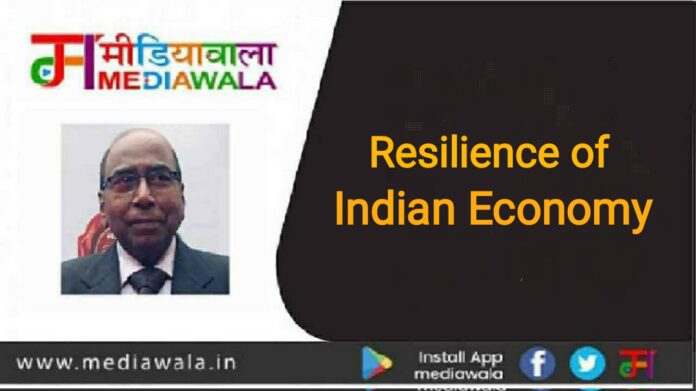
Resilience of Indian Economy;
The Indian economy had started limping even before the onset of pandemic COVID-19. The pandemic gave a body blow to the economy with dramatic fall of 23.9% in the first quarter of 2020–21.
Finance Minister Sitharaman came out with a relief package with a slew of measures in 2020. Her subsequent budgets along with this package seem to have taken out the Indian economy from its lurch.
The resilience of the basic structure of Indian economy has bewildered many in the world. Even the revised lowered forecast for GDP growth for 2022–23 is around 8%. The estimate for the GDP for the last financial year was $3.12 trillion, breaking the barrier of 3 trillion. The GST collection for March, 2022 was Rs 1.42 lakh crore.
In spite of the last budget being a Covid budget the fiscal – deficit was restrained it 9.5%. The current account deficit for FY2022 is likely to be 1.5% of GDP. Manufacturing has improved drastically and the exports increased by 46.53% to reach all time high of $417.81 billion.
Imports also increased to $610.22 billion. As of now, India has 83 Unicorns which is the third largest number in the world. India is expected to attract $100 billion foreign direct investment (FDI) in 2022-23 on the back of economic reforms and ease of doing business in recent years.
However inflation in March to December 2021 was 5.2%. In day to day life, the food inflation is much higher creating problems for the lower and middle classes.
The budget for the current year envisages a humongous amount of Rs 10.68 lakh crore for infrastructure, which is 27% of the whole budget. This vast government spending while providing jobs, is likely to increase the inflation.
Unemployment is another great concern for Indian economy. According to McKinsey Global Institute India needs to create 90 million non-farm jobs between 2023 and 2030 to absorb new workers and an additional 30 million workers who could move from farm work to more productive non-farm sectors.
India is the world’s sixth-largest economy by nominal GDP and the third-largest by purchasing power parity (PPP). It is still the fastest growing economy among bigger nations.
In our subcontinent Pakistan, Nepal and Sri Lanka are facing very grim economic situation. Sri Lanka has already fallen into debt trap by its unbridled borrowing from China.
India is on the right course but it has to ward off internal squabbling especially the high temperature of communalism at present. Russia-Ukraine war will also put India in a difficult mode. This war has changed many fundamentals of the world.
In future many economic decisions will not be taken on sound economic principles but on political consideration. Along with other countries, India will also ensure its supply chain from safer places rather than cheaper ones.
Still I feel that if, and only if, India can manage its internal contradictions of extreme polarisation and pursues on development at present pace for next 2 to 3 decades, then 21st century can see the rise of India as the real world power.







